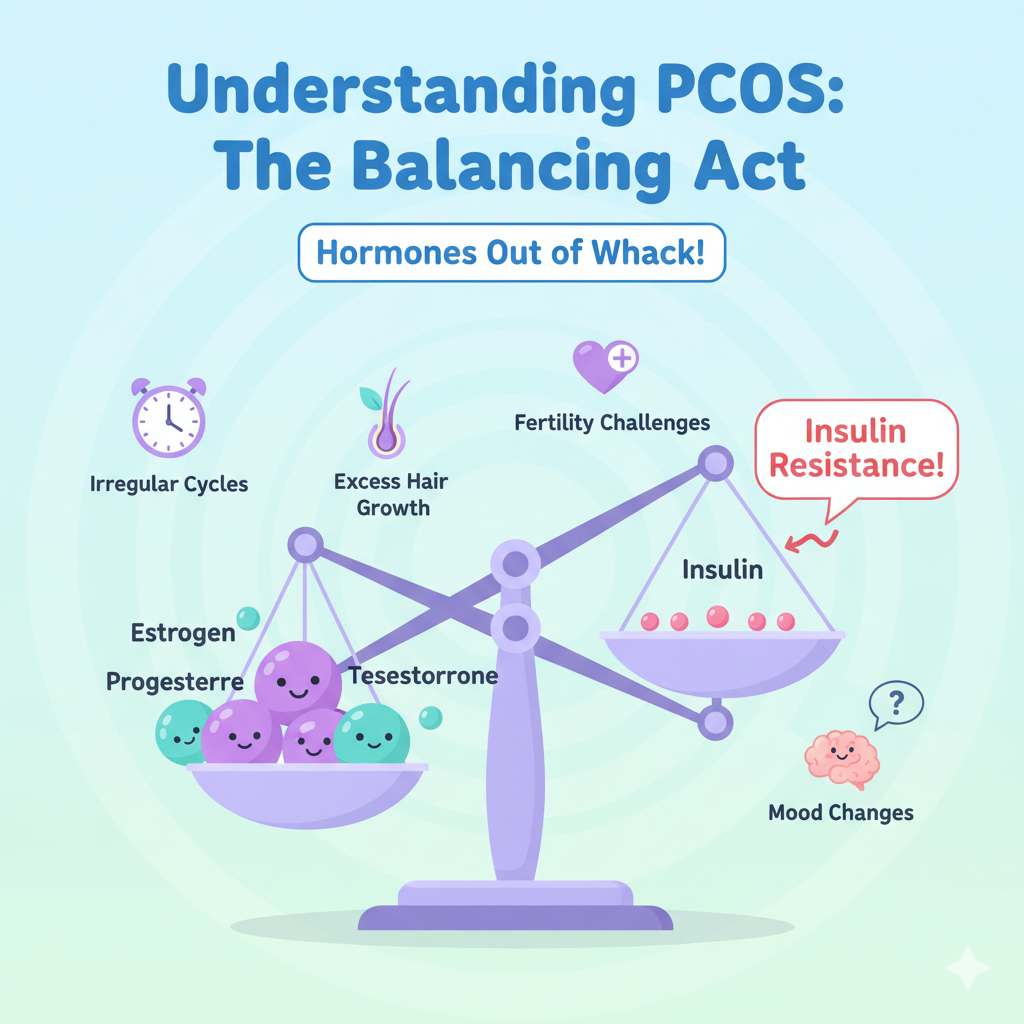Your Complete Guide to Postnatal Recovery
Nurturing Your Body and Mind After Delivery for a Stronger, Healthier You
Your Postnatal Recovery Journey
Comprehensive guidance for healing your body and nurturing your mind after childbirth
Welcoming your baby into the world is a momentous occasion, filled with an overwhelming mix of love, relief, and awe. As you cradle your newborn, a new journey begins—not just for your little one adjusting to life outside the womb, but for you. Your body and mind are embarking on a profound and unique healing journey known as the postnatal period.
This time is about so much more than just physical recovery. It’s a sacred window for nurturing your emotional well-being, patiently reconnecting with your changed body, and giving yourself the immense grace and compassion you deserve. At Blossom Women’s Clinic, we believe that by caring for yourself with intention, you can build a strong foundation for your new life as a mother.

Understanding the “Fourth Trimester”
The postnatal period, often lovingly called the “fourth trimester,” spans the first six to eight weeks after delivery, but its effects and the need for self-care can extend far beyond. This is a time of tremendous transition. Your body is working tirelessly to recover from the marathon of childbirth: your uterus is contracting back to its pre-pregnancy size, your hormone levels are shifting dramatically, and your entire system is focused on restoring its energy reserves.
It’s crucial to remember that every woman’s recovery is as unique as her birth story. Whether you had an unmedicated vaginal delivery, an assisted birth, or a cesarean section, your body has its own timeline and needs for healing. Embracing this individuality is the first step toward a positive recovery.
The Postpartum Recovery Timeline
First 24-72 Hours
Focus on rest, hydration, and bonding with your baby. Manage pain and bleeding with prescribed medications and pads.
Week 1-2
Establish breastfeeding if applicable. Begin gentle movements and pelvic floor exercises. Watch for signs of infection or complications.
Week 3-6
Gradually increase activity levels. Continue pelvic floor exercises. Emotional adjustments may become more pronounced.
Week 6-12
Postpartum check-up with your healthcare provider. May be cleared for more exercise. Continue to prioritize rest and self-care.
Part 1: Caring for Your Changing Body
Your body has performed a miracle, and it now needs time, rest, and targeted care to heal
1. The Foundation: Rest and Recovery
“Sleep when the baby sleeps” is classic advice for a reason, but it can feel impossible. Instead of seeing it as a command, reframe it as a permission slip to slow down. Your body uses sleep to repair tissue, regulate hormones, and restore mental clarity.
- Create a Restful Environment: Keep a basket with snacks, water, phone charger, and burp cloths next to your bed or couch to minimize unnecessary trips.
- Accept All Help: When friends and family offer to help, say yes! Let them handle meals, laundry, or watching the baby while you take a blissful, uninterrupted shower or nap.
- Prioritize Lying Down: Even if you can’t sleep, lying down horizontally relieves pressure on your pelvic floor and perineum, reducing swelling and promoting healing.
- Establish a Sleep Routine: Create a calming pre-sleep ritual even for short naps – dim lights, gentle music, or a few minutes of deep breathing.
- Limit Visitors: Don’t feel obligated to entertain guests. Short, scheduled visits are best in the early weeks.
2. Fueling Your Healing: Nutrition and Hydration
Think of your food as medicine during this time. A nutrient-rich diet is essential for healing tissues, replenishing iron stores, and providing energy for the demanding task of caring for a newborn.
- Focus on Key Nutrients: Prioritize iron (lean red meat, leafy greens), protein (eggs, Greek yogurt, lentils), fiber (prunes, oats, vegetables) to combat constipation, and calcium (dairy, fortified foods).
- Embrace Easy, Nourishing Meals: Prepare freezer meals before birth or rely on simple, one-handed snacks like hard-boiled eggs, nuts, cheese sticks, and smoothies.
- Hydrate, Hydrate, Hydrate: This is non-negotiable, especially if you’re breastfeeding. Keep a large water bottle with a straw (easier to manage one-handed) with you at all stations. Herbal teas like fenugreek or fennel can also be supportive for milk supply.
- Include Healthy Fats: Avocado, nuts, and olive oil support hormone production and brain health for you and your baby.
- Don’t Skip Meals: Even when busy, make time to eat regularly to maintain energy levels and support milk production.

3. Reconnecting with Your Core: Gentle Movement and Pelvic Floor
The idea of “getting your body back” can be misleading. Instead, focus on safely reconnecting with it.
- Start with Breath: Simple diaphragmatic breathing can help activate your deep core and pelvic floor without strain. Inhale deeply, letting your belly expand, and as you exhale, gently draw your navel toward your spine.
- Pelvic Floor Physiotherapy: This is a gold standard of postnatal care. A physiotherapist can assess your pelvic floor strength and provide personalized exercises, which is vital for recovery from both vaginal and cesarean births.
- Progress Slowly: Begin with short, slow walks, gradually increasing distance as you feel able. Always listen to your body and stop if you feel pain. Consult your healthcare provider before starting any formal exercise routine.
- Focus on Posture: Be mindful of your posture while feeding and carrying your baby to prevent back and shoulder strain.
- Incorporate Gentle Stretching: Simple stretches can relieve muscle tension and improve circulation without overtaxing your recovering body.
4. Targeted Healing: Perineal and Cesarean Care
For Vaginal Birth Recovery:
- Soothe the Area: Use a peri-bottle (squirt bottle) with warm water to clean yourself after using the toilet—pat dry, don’t wipe. Ice packs or chilled witch hazel pads can provide significant relief for swelling in the first 24-72 hours.
- Sitz Baths: Soaking your perineal area in a warm, shallow bath several times a day can increase blood flow, reduce inflammation, and ease discomfort.
- Comfort is Key: Use a doughnut pillow to sit on if you’re sore, and wear loose, breathable cotton underwear.
- Manage Pain: Use recommended pain relief as needed, and avoid straining during bowel movements by eating high-fiber foods and staying hydrated.
- Watch for Signs of Infection: Increased pain, foul-smelling discharge, or fever could indicate an infection that needs medical attention.
or Cesarean Section Recovery:
- Incision Care: Keep the incision clean and dry. Gently wash it with mild soap and water and pat it dry. Watch for signs of infection like redness, swelling, warmth, or pus.
- Pain Management: Stay on top of your pain medication schedule as prescribed by your doctor to keep discomfort manageable, which will allow you to move more easily and care for your baby.
- Support Your Abdomen: Hold a pillow firmly against your incision when you need to cough, sneeze, laugh, or get out of bed to minimize pain.
- Avoid Heavy Lifting: Follow your doctor’s recommendations about weight restrictions, which typically include not lifting anything heavier than your baby for the first few weeks.
- Scar Massage: Once healed, gentle scar massage can improve mobility and reduce adhesions (consult your healthcare provider for guidance).
Part 2: Nurturing Your Emotional Well-being
The transition to motherhood can be a rollercoaster of emotions that deserves as much attention as physical healing
1. Recognizing the Emotional Spectrum
Baby Blues: Up to 80% of new mothers experience mood swings, crying spells, and anxiety in the first two weeks. This is typically linked to hormonal shifts and usually resolves on its own.
Postpartum Depression (PPD) & Anxiety (PPA): If feelings of intense sadness, hopelessness, rage, or anxiety persist beyond two weeks, interfere with your ability to function, or you have thoughts of harming yourself or your baby, it is crucial to seek help. This is a medical condition, not a character flaw, and it deserves care and treatment.
When to Seek Immediate Help
- Thoughts of harming yourself or your baby
- Inability to care for yourself or your baby
- Severe anxiety or panic attacks
- Feelings of detachment from your baby
- Extreme irritability or anger
2. Daily Practices for Mental Nourishment
- Talk Openly: Share your feelings with your partner, a trusted friend, or a family member. Voicing your fears and frustrations can make them feel less powerful.
- Practice Mindfulness: You don’t need to meditate for an hour. Try taking three deep, conscious breaths while feeding your baby. Notice five things you can see, four things you can feel, and three things you can hear. This can ground you during a stressful moment.
- Find Your Tribe: Connect with other new mothers. Join a postnatal yoga class or a virtual support group. Hearing that you are not alone in your struggles is incredibly validating and empowering.
- Set Realistic Expectations: Understand that some days will be harder than others, and that’s completely normal.
- Create Small Pleasures: Incorporate at least one thing you enjoy into each day, whether it’s a favorite snack, a few minutes outside, or a chapter of a book.
The Heart of It All: Embracing Self-Compassion
In a world of social media highlights and unsolicited advice, the most radical thing you can do for your recovery is to be kind to yourself
- Release the Timeline: There is no single “finish line” for postnatal recovery. Your body may look and feel different, and that’s okay. Celebrate what it has done and the strength it shows every day.
- Lower the Bar: Your only jobs right now are to feed your baby, rest, and heal. The dishes, the laundry, and the perfect home can wait. Let go of any expectations that don’t serve your well-being.
- Celebrate Small Wins: Managed to take a shower? That’s a win. Ate a warm meal? That’s a win. Took a five-minute walk outside? That’s a win. Acknowledge every step forward, no matter how small.
- Practice Positive Self-Talk: Speak to yourself as you would to a dear friend going through the same experience.
- Honor Your Feelings: Allow yourself to feel the full range of emotions without judgment – joy, sadness, overwhelm, and everything in between.
Common Questions About Postnatal Recovery
Answers to the questions new mothers ask most frequently
How long does postnatal recovery typically take?
While the initial healing phase lasts about 6-8 weeks, complete recovery can take much longer – often 6 months to a year. Every woman’s journey is unique, and factors like delivery method, support system, and overall health all play a role. Be patient with your body and remember that healing isn’t linear.
When can I start exercising after giving birth?
Most healthcare providers recommend waiting until your 6-week postpartum check-up before beginning any formal exercise program. However, gentle walking can usually be started within days of delivery for vaginal births and as soon as you feel comfortable after a C-section. Always listen to your body and get clearance from your doctor.
What are the signs of postpartum depression I should watch for?
Signs of PPD include persistent sadness, anxiety, or “empty” mood; irritability; feelings of guilt, worthlessness, or hopelessness; loss of interest or pleasure in hobbies and activities; fatigue; difficulty bonding with your baby; withdrawing from family and friends; and thoughts of harming yourself or your baby. If you experience any of these symptoms for more than two weeks, please seek professional help.
Is it normal to still look pregnant after delivery?
Yes, this is completely normal. Your uterus takes time to shrink back to its pre-pregnancy size, and your abdominal muscles have been stretched. It’s common to still have a noticeable belly for several weeks or even months after delivery. Give yourself grace – your body created and nurtured a human being!
You Are Not Alone on This Journey
At Blossom Women’s Clinic, we are here to walk alongside you during this transformative chapter. Our team provides compassionate, expert care tailored to your unique needs—whether it’s supporting your physical recovery, offering emotional counseling for postpartum mood disorders, providing expert lactation consulting, or simply being a listening ear.
Your journey into motherhood is beautiful, challenging, and deeply personal. By nurturing yourself with the same love and attention you give your baby, you are not just recovering—you are thriving.


